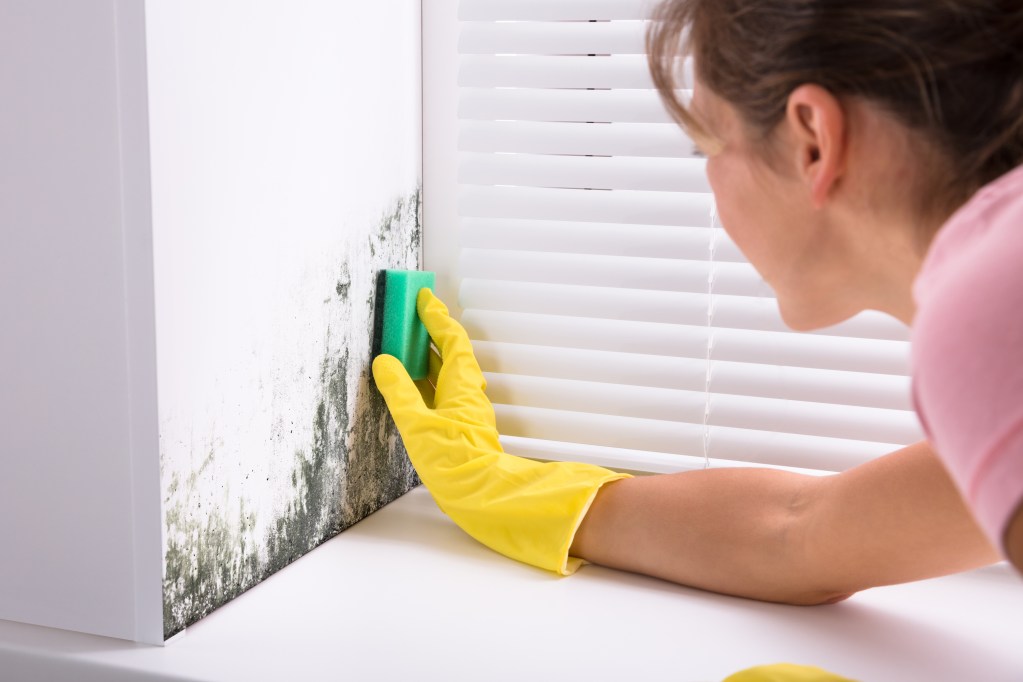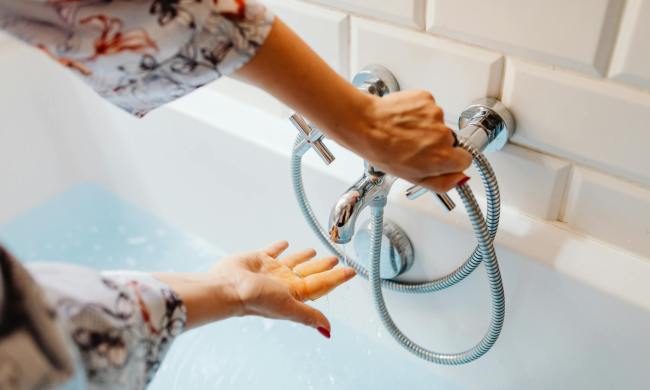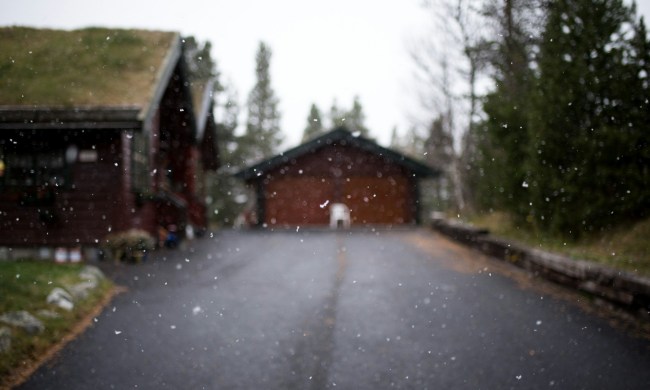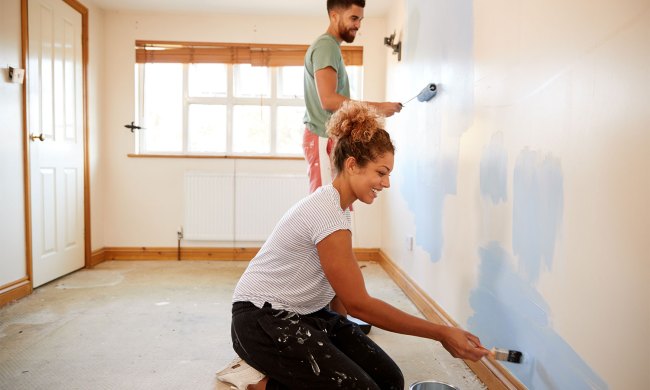
Everyone knows that mold is gross, and it can cause a variety of health issues when people inhale the spores. But mold can be both removed and prevented if you follow the right steps, regular cleaning routines, and understand how it forms and multiplies. We’re going to discuss how to clean mold the right way so you can breathe easy in your home.
There are about 100,000 different types of mold in the world, and 12 of them exist in household settings, says Apartment Guide. Of these 12 types, two are common in the kitchen and bathroom areas, where there exists a lot of moisture and condensation. These two types are what we are discussing today: How to identify them, clean them, and prevent them from recurring.
Kitchen and bathroom mold identification

The most common mold in homes is ulocladium. It lives in kitchens, bathrooms, and where there is water damage in basements and on windows. It forms in household areas with high condensation, such as steamy bathrooms with inadequate ventilation, or kitchens that experience high volumes of steam and moisture. This mold isn’t as harmful as some others, but it can cause hay fever, trouble breathing, skin irritations and infections, and asthma symptoms in people who are sensitive to it.
The second most common mold found in residential homes is alternaria, said The National Library of Medicine. Unlike ulocladium, this mold appears when water damage has occurred, such as when shower water has breached tile grout or a kitchen sink has leaked into drywall. This mold spreads quickly and can cause asthma symptoms in people who are sensitive to it.
Identifying the problem

Look for larger patches and run the water or shower to see exactly where the breach is. If you own your home, you may need to call a contractor to help you find out where the mold started. If you rent, put in a call to the homeowner or management company to let them know your situation.
If you clean it up right away, it may be more difficult for a professional to diagnose the problem. Take pictures of the area and make a backup copy of them by saving them to the cloud or sending them to a trusted friend. Now that you have documented the issue, you can move on to the cleaning process.
Protect yourself

You need some items to clean mold safely. These two types of household mold have the most adverse effect on people with weak immune systems, lung damage, or high susceptibility to allergens. However, allergies can show up at any time, so protecting yourself when cleaning any mold is imperative.
Mold spores are tiny, and although they may be in the air already, cleaning them will release a large number of them at once. To minimize the concentration of these spores, you’ll need an N95-rated respirator, similar to the type worn by painters and woodworkers. These masks are disposable, and essential to keeping yourself safe during the cleaning process. Additionally, you will need rubber or nitrile gloves because you will be handling bleach or detergents. The CDC also suggests that you wear rubber boots and protective goggles when cleaning mold with bleach.
Do not sweep dry mold, as that will release more spores into the air. Always get the mold wet before you begin to clean, says the EPA.
Is it OK to touch mold?
No, it is not OK to touch mold. Mold can cause a variety of health problems, including allergic reactions, respiratory issues, and skin irritation. When you touch mold, you risk spreading its spores to other areas, exacerbating the problem. It’s important to handle mold with care, using protective gear like gloves and masks, and to clean it up promptly using appropriate cleaning agents. If the mold infestation is extensive, it’s best to seek professional help to ensure thorough and safe removal.
Choose the right mold-cleaning product

Bleach, ammonia, borax, and vinegar are all effective mold-removal products. Your decision to use any of these depends on whether you have pets and small children, adequate ventilation, and access to protective equipment. Keep in mind that several natural cleaning products are as effective as bleach and ammonia at cleaning and disinfecting moldy surfaces, so take a look at some of your choices.
How to clean mold with bleach
Cleaning mold with bleach is a guaranteed way to kill all species of mold and its spores. It also sanitizes nonporous surfaces and leaves them resistant to future mold growth. The keyword here is “nonporous,” though. Bleach cannot penetrate drywall or wood, and therefore, the mold will come back if you treat them with bleach. Bleach also can be toxic to breathe, so that’s one more downside.
If you choose bleach, mix 8 ounces of bleach with a gallon of water, and apply using a cloth or sponge, or use a spray bottle. The area can air dry, as long as you keep pets and children away, and as long as it’s not a food-preparation surface.
How to clean mold with ammonia
Ammonia effectively kills mold on nonporous surfaces, similar to bleach. A 50/50 mix of ammonia and water can be sprayed onto moldy surfaces and left for a few hours. Ammonia, like bleach, cannot penetrate porous surfaces such as wood and drywall. It is also harsh and toxic, so use protective gloves at the very least. Cleaning products that contain ammonia also work well, so mitigate the mold by following the directions on the label.
Do not allow children and pets near ammonia or products containing ammonia, and under no circumstances mix ammonia with bleach. This mixture produces chlorine gas, which can be fatal, states Healthline.
How to clean mold with borax
Borax is a natural substance that cleans mold well and deodorizes toilets and drains. Although toxic when swallowed, borax does not produce harmful fumes or chemicals. Using 1 cup of borax powder with 1 gallon of water, scrub the area until clean. Once the mold is gone, sponge the area again with the solution and let air dry. The borax inhibits mold regrowth on the cleaned surface.
How to clean mold with vinegar
Vinegar is nontoxic and fume-free, so it is an excellent natural cleaning choice for mold. Vinegar also has the advantage of penetrating porous surfaces and killing the mold at its root. Using white distilled vinegar at full strength, spray it on any moldy surface and let it sit for about an hour. Wipe clean with a damp paper towel or cloth and let it dry. The vinegar smell will dissipate in a few hours. Spraying vinegar on any porous or nonporous surface that you wish to inhibit mold growth will prevent it from returning.
Mold is a common household problem, especially in high-moisture areas. If your mold is recurring, and your methods are not working to kill it, you’ll need a professional to figure out what the root of the problem is. And see your doctor if you have trouble breathing, you’re coughing or wheezing, or if you have itchy eyes and skin. You could be experiencing mold allergies and should remove yourself from exposure until the mold is thoroughly destroyed.
With the right methods and products, you can tackle your mold problem once and for all!



